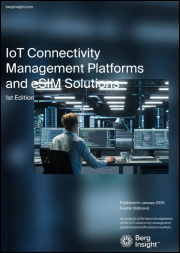
|
시장보고서
상품코드
1305217
세계의 eSIM(임베디드 SIM) 시장 조사 보고서 : 산업 분석, 규모, 점유율, 성장, 동향, 예측(2023-2030년)Global Embedded SIM Market Research Report - Industry Analysis, Size, Share, Growth, Trends and Forecast 2023 to 2030 |
||||||
eSIM(임베디드 SIM) 시장의 세계 수요는 2022년 2,222만 달러에서 2023-2030년 조사 기간 동안 12.52%의 CAGR로 2030년에는 6,424만 달러에 육박하는 시장 규모에 이를 것으로 추정됩니다.
eSIM(임베디드 SIM)은 모든 기기(스마트폰, 태블릿, 웨어러블 기기)에 내장된 디지털 SIM 카드입니다. eSIM은 탈부착이 가능하고 기기에 물리적으로 삽입되는 기존 SIM 카드와 달리, eSIM은 기기에 내장되어 있어 제거하거나 교체할 수 없으며, eSIM에는 사용자 계정 정보, 네트워크 설정 등 기존 SIM 카드와 동일한 정보가 포함되어 있습니다. eSIM은 기존 SIM 카드에 비해 편의성 향상, 보안 강화, 공간 절약 등 몇 가지 장점이 있으며, eSIM과 호환되는 기기가 늘어나고 eSIM을 지원하는 통신사가 늘어남에 따라 eSIM의 사용은 앞으로 더욱 확산될 것으로 예상됩니다.
시장 역학:
스마트홈 기기, 웨어러블 기기, 커넥티드 카 등 IoT 기기의 확산으로 eSIM에 대한 수요가 증가하고 있으며, eSIM은 원격으로 프로비저닝할 수 있고 물리적인 SIM 카드를 교체할 필요가 없기 때문에 이러한 기기들을 연결하고 관리할 수 있는 편리한 방법을 제공합니다. 더 많은 디바이스가 연결됨에 따라 원격 관리 및 모니터링의 필요성이 증가하고 있습니다. eSIM은 디바이스를 원격으로 관리할 수 있어 물리적 접근 없이도 디바이스 설정 업데이트, 새 디바이스 프로비저닝, 문제 해결이 용이합니다. 용이하게 합니다. eSIM은 기존 SIM 카드보다 유연성과 확장성이 뛰어나며, 금융 거래나 의료 데이터와 같은 민감한 정보를 다루는 기기에 특히 중요합니다. 쉽게 재프로그래밍하거나 통신사 간 전환이 가능하기 때문에 비용을 절감하고 사용자 경험을 개선하는 데 도움이 됩니다. 더 작고 전력 효율이 높은 칩셋이 출시되는 등 기술 발전으로 더 정교한 eSIM을 개발할 수 있게 되었습니다. 이에 따라 더 다양한 기기와 사용 사례에 대응할 수 있는 eSIM에 대한 수요가 증가하고 있습니다.
이 보고서는 Porter's Five Forces 모델, 시장 매력도 분석, 밸류체인 분석을 다루고 있습니다. 이러한 도구는 업계 구조를 명확하게 파악하고 세계 수준에서 경쟁의 매력을 평가하는 데 도움이 됩니다. 또한 이러한 도구는 eSIM(임베디드 SIM) 세계 시장의 각 부문을 포괄적으로 평가할 수 있으며, eSIM(임베디드 SIM) 산업의 성장과 추세는이 연구에 대한 전체적인 접근 방식을 제공합니다.
시장 세분화:
eSIM(임베디드 SIM) 시장 보고서의 이 섹션에서는 국가 및 지역 수준에서 분석하여 부문에 대한 자세한 데이터를 제공하여 전략가가 향후 기회를 통해 각 제품 및 서비스의 대상 계층을 식별하는 데 도움이 될 수 있습니다.
산업별
- 물류
- 자동차
- 가전제품
- 에너지 & 유틸리티
- 제조업
- 소매 및 운송
솔루션별
- 하드웨어
- 소프트웨어
최종사용자별
- 커넥티드 카
- 노트북
- M2M
- 스마트폰
- 태블릿
- 웨어러블
- 기타
지역 분석
이 섹션에서는 북미, 유럽, 아시아태평양, 라틴아메리카, 중동 및 아프리카의 eSIM(임베디드 SIM) 시장의 현재 및 미래 수요를 강조하는 지역 전망을 다룹니다. 또한, 모든 주요 지역의 개별 애플리케이션 부문의 수요, 추정 및 예측에 초점을 맞추고 있습니다.
목차
제1장 서문
제2장 주요 요약
- 시장 하이라이트
- 세계 시장 현황
제3장 eSIM(임베디드 SIM) - 산업 분석
- 서론 : 시장 역학
- 시장 성장 촉진요인
- 시장 성장 억제요인
- 시장 기회
- 업계 동향
- Porter's Five Forces 분석
- 시장 매력도 분석
제4장 밸류체인 분석
- 밸류체인 분석
- 원재료 분석
- 원재료 리스트
- 원재료 제조업체 리스트
- 주요 원재료 가격 동향
- 잠재적 바이어 리스트
- 마케팅 채널
- 직접 마케팅
- 간접 마케팅
- 마케팅 채널 발전 동향
제5장 COVID-19 발생의 영향 분석
제6장 eSIM(임베디드 SIM) 세계 시장 분석 : 업계별
- 업계별 개요
- 실적 데이터와 예측 데이터
- 업계별 분석
- 물류
- 자동차
- 가전
- 에너지·유틸리티
- 제조업
- 소매·운송
제7장 eSIM(임베디드 SIM) 세계 시장 분석 : 솔루션별
- 솔루션별 개요
- 실적 데이터와 예측 데이터
- 솔루션별 분석
- 하드웨어
- 소프트웨어
제8장 eSIM(임베디드 SIM) 세계 시장 분석 : 최종사용별
- 최종 용도별 개요
- 실적 데이터와 예측 데이터
- 용도별 분석
- 커넥티드카
- 노트북
- M2M
- 스마트폰
- 태블릿
- 웨어러블
- 기타
제9장 eSIM(임베디드 SIM) 세계 시장 분석 : 지역별
- 지역별 전망
- 서론
- 북미의 매출 분석
- 개요, 실적과 예측
- 부문별
- 국가별
- 미국
- 캐나다
- 멕시코
- 유럽 매출 분석
- 개요, 실적과 예측
- 부문별
- 국가별
- 영국
- 프랑스
- 독일
- 이탈리아
- 러시아
- 기타 유럽
- 아시아태평양 매출 분석
- 개요, 과거 및 예측
- 아시아태평양 : 부문별
- 아시아태평양 : 국가별
- 중국
- 인도
- 일본
- 한국
- 호주
- 기타 아시아태평양
- 라틴아메리카 매출 분석
- 개요, 실적과 예측
- 부문별
- 국가별
- 브라질
- 아르헨티나
- 페루
- 칠레
- 기타 라틴아메리카
- 중동 및 아프리카 매출 분석
- 개요, 실적과 예측
- 부문별
- 국가별
- 사우디아라비아
- 아랍에미리트
- 이스라엘
- 남아프리카공화국
- 기타 중동 및 아프리카
제10장 임베디드 SIM 기업 경쟁 상황
- eSIM(임베디드 SIM) 시장 경쟁
- 제휴, 협력, 합의
- 인수합병
- 신제품 발매
- 기타 개발
제11장 기업 개요
- 기업 점유율 분석
- 시장 집중도
- NXP Semiconductors N.V.
- Telefonica S.A.
- Giesecke & Devrient
- Gemalto NV
- Cisco Systems Deutsche Telekom AG
- Infineon Technologies AG
- Idemia
- STMicroelectronics
- Sierra Wireless
- Vodafone
- NTT Docomo
- ARM Ltd
- Singapore telecommunications limited.
참고 - 기업 개요에서 재무 상세나 최근의 동향은 비공개 기업의 경우 입수 가능 여부에 따라 달라지거나 제공되지 않을 수 있습니다.
ksm 23.08.22The global demand for Embedded SIM Market is presumed to reach the market size of nearly USD 64.24 MN by 2030 from USD 22.22 MN in 2022 with a CAGR of 12.52% under the study period of 2023 - 2030. Regarding volume, the market was calculated XX Units in 2022 and forecast to touch XX Units by 2030 with a CAGR of XX% during 2023 - 2030.
An Embedded SIM, or eSIM for short, is a digital SIM card that is inbuilt into any device (smartphone, tablet, or wearable device). Unlike traditional SIM cards, which are removable and physically inserted into a device, eSIMs are integrated into the device and cannot be removed or replaced. An eSIM contains the same information as a traditional SIM card, including the user's account information and network settings. However, it is programmed directly into the device's chipset, eliminating the need for a physical card. eSIMs offer several benefits over traditional SIM cards, including increased convenience, security, and space-saving. As more devices become compatible with eSIMs and more carriers offer eSIM support, their use is expected to become more widespread in the future.
Market Dynamics:
The increasing adoption of IoT devices, such as smart home devices, wearables, and connected cars, is driving the demand for eSIMs. eSIMs offer a convenient way to connect and manage these devices, as they can be remotely provisioned and don't require physical SIM card swaps. As more devices become connected, the need for remote management and monitoring is growing. eSIMs enable remote management of devices, making it easier to update device settings, provision new devices, and troubleshoot issues without requiring physical access. eSIMs offer increased security over traditional SIM cards, as they are harder to tamper with or steal. This is particularly important for devices that handle sensitive information, such as financial transactions or medical data. eSIMs offer greater flexibility and scalability than traditional SIM cards. They can be easily reprogrammed or switched between carriers, which can help reduce costs and improve the user experience. Advances in technology, such as the availability of smaller, more power-efficient chipsets, are enabling the development of more sophisticated eSIMs. This is leading to increased demand for eSIMs that can support a wider range of devices and use cases.
The report covers Porter's Five Forces Model, Market Attractiveness Analysis, and Value Chain analysis. These tools help to get a clear picture of the industry's structure and evaluate the competition attractiveness at a global level. Additionally, these tools also give an inclusive assessment of each segment in the global market of embedded sim. The growth and trends of Embedded SIM Industry provide a holistic approach to this study.
Market Segmentation:
This section of the embedded sim market report provides detailed data on the segments by analyzing them at country and regional level, thereby assisting the strategist in identifying the target demographics for the respective product or services with the upcoming opportunities.
By Vertical
- Logistics
- Automotive
- Consumer Electronics
- Energy & Utilities
- Manufacturing
- Retail & Transportation
By Solution
- Hardware
- Software
By End-Use
- Connected Cars
- Laptops
- M2M
- Smartphones
- Tablets
- Wearables
- Others
Regional Analysis
This section covers the regional outlook, which accentuates current and future demand for the Embedded SIM market across North America, Europe, Asia-Pacific, Latin America, and Middle East & Africa. Further, the report focuses on demand, estimation, and forecast for individual application segments across all the prominent regions.
The research report also covers the comprehensive profiles of the key players in the market and an in-depth view of the competitive landscape worldwide. The major players in the embedded sim market include NXP Semiconductors N.V., Telefonica S.A., Giesecke & Devrient, Gemalto NV, Cisco Systems Deutsche Telekom AG, Infineon Technologies AG, Idemia, STMicroelectronics, Sierra Wireless, Vodafone, NTT Docomo, ARM Ltd, Singapore telecommunications limited. This section consists of a holistic view of the competitive landscape that includes various strategic developments such as key mergers & acquisitions, future capacities, partnerships, financial overviews, collaborations, new product developments, new product launches, and other developments.
TABLE OF CONTENTS
1 . PREFACE
- 1.1. Report Description
- 1.1.1. Objective
- 1.1.2. Target Audience
- 1.1.3. Unique Selling Proposition (USP) & offerings
- 1.2. Research Scope
- 1.3. Research Methodology
- 1.3.1. Market Research Process
- 1.3.2. Market Research Methodology
2 . EXECUTIVE SUMMARY
- 2.1. Highlights of Market
- 2.2. Global Market Snapshot
3 . EMBEDDED SIM - INDUSTRY ANALYSIS
- 3.1. Introduction - Market Dynamics
- 3.2. Market Drivers
- 3.3. Market Restraints
- 3.4. Opportunities
- 3.5. Industry Trends
- 3.6. Porter's Five Force Analysis
- 3.7. Market Attractiveness Analysis
- 3.7.1 Market Attractiveness Analysis By Vertical
- 3.7.2 Market Attractiveness Analysis By Solution
- 3.7.3 Market Attractiveness Analysis By End-use
- 3.7.4 Market Attractiveness Analysis By Region
4 . VALUE CHAIN ANALYSIS
- 4.1. Value Chain Analysis
- 4.2. Raw Material Analysis
- 4.2.1. List of Raw Materials
- 4.2.2. Raw Material Manufactures List
- 4.2.3. Price Trend of Key Raw Materials
- 4.3. List of Potential Buyers
- 4.4. Marketing Channel
- 4.4.1. Direct Marketing
- 4.4.2. Indirect Marketing
- 4.4.3. Marketing Channel Development Trend
5 . IMPACT ANALYSIS OF COVID-19 OUTBREAK
6 . GLOBAL EMBEDDED SIM MARKET ANALYSIS BY VERTICAL
- 6.1 Overview by Vertical
- 6.2 Historical and Forecast Data
- 6.3 Analysis by Vertical
- 6.4 Logistics Historic and Forecast Sales by Regions
- 6.5 Automotive Historic and Forecast Sales by Regions
- 6.6 Consumer Electronics Historic and Forecast Sales by Regions
- 6.7 Energy & Utilities Historic and Forecast Sales by Regions
- 6.8 Manufacturing Historic and Forecast Sales by Regions
- 6.9 Retail & Transportation Historic and Forecast Sales by Regions
7 . GLOBAL EMBEDDED SIM MARKET ANALYSIS BY SOLUTION
- 7.1 Overview by Solution
- 7.2 Historical and Forecast Data
- 7.3 Analysis by Solution
- 7.4 Hardware Historic and Forecast Sales by Regions
- 7.5 Software Historic and Forecast Sales by Regions
8 . GLOBAL EMBEDDED SIM MARKET ANALYSIS BY END-USE
- 8.1 Overview by End-use
- 8.2 Historical and Forecast Data
- 8.3 Analysis by End-use
- 8.4 Connected cars Historic and Forecast Sales by Regions
- 8.5 Laptops Historic and Forecast Sales by Regions
- 8.6 M2M Historic and Forecast Sales by Regions
- 8.7 Smartphones Historic and Forecast Sales by Regions
- 8.8 Tablets Historic and Forecast Sales by Regions
- 8.9 Wearables Historic and Forecast Sales by Regions
- 8.10. Others Historic and Forecast Sales by Regions
9 . GLOBAL EMBEDDED SIM MARKET ANALYSIS BY GEOGRAPHY
- 9.1. Regional Outlook
- 9.2. Introduction
- 9.3. North America Sales Analysis
- 9.3.1. Overview, Historic and Forecast Data Sales Analysis
- 9.3.2. North America By Segment Sales Analysis
- 9.3.3. North America By Country Sales Analysis
- 9.3.4. United State Sales Analysis
- 9.3.5. Canada Sales Analysis
- 9.3.6. Mexico Sales Analysis
- 9.4. Europe Sales Analysis
- 9.4.1. Overview, Historic and Forecast Data Sales Analysis
- 9.4.2. Europe by Segment Sales Analysis
- 9.4.3. Europe by Country Sales Analysis
- 9.4.4. United Kingdom Sales Analysis
- 9.4.5. France Sales Analysis
- 9.4.6. Germany Sales Analysis
- 9.4.7. Italy Sales Analysis
- 9.4.8. Russia Sales Analysis
- 9.4.9. Rest Of Europe Sales Analysis
- 9.5. Asia Pacific Sales Analysis
- 9.5.1. Overview, Historic and Forecast Data Sales Analysis
- 9.5.2. Asia Pacific by Segment Sales Analysis
- 9.5.3. Asia Pacific by Country Sales Analysis
- 9.5.4. China Sales Analysis
- 9.5.5. India Sales Analysis
- 9.5.6. Japan Sales Analysis
- 9.5.7. South Korea Sales Analysis
- 9.5.8. Australia Sales Analysis
- 9.5.9. Rest Of Asia Pacific Sales Analysis
- 9.6. Latin America Sales Analysis
- 9.6.1. Overview, Historic and Forecast Data Sales Analysis
- 9.6.2. Latin America by Segment Sales Analysis
- 9.6.3. Latin America by Country Sales Analysis
- 9.6.4. Brazil Sales Analysis
- 9.6.5. Argentina Sales Analysis
- 9.6.6. Peru Sales Analysis
- 9.6.7. Chile Sales Analysis
- 9.6.8. Rest of Latin America Sales Analysis
- 9.7. Middle East & Africa Sales Analysis
- 9.7.1. Overview, Historic and Forecast Data Sales Analysis
- 9.7.2. Middle East & Africa by Segment Sales Analysis
- 9.7.3. Middle East & Africa by Country Sales Analysis
- 9.7.4. Saudi Arabia Sales Analysis
- 9.7.5. UAE Sales Analysis
- 9.7.6. Israel Sales Analysis
- 9.7.7. South Africa Sales Analysis
- 9.7.8. Rest Of Middle East And Africa Sales Analysis
10 . COMPETITIVE LANDSCAPE OF THE EMBEDDED SIM COMPANIES
- 10.1. Embedded Sim Market Competition
- 10.2. Partnership/Collaboration/Agreement
- 10.3. Merger And Acquisitions
- 10.4. New Product Launch
- 10.5. Other Developments
11 . COMPANY PROFILES OF EMBEDDED SIM INDUSTRY
- 11.1. Company Share Analysis
- 11.2. Market Concentration Rate
- 11.3. NXP Semiconductors N.V.
- 11.3.1. Company Overview
- 11.3.2. Company Revenue
- 11.3.3. Products
- 11.3.4. Recent Developments
- 11.4. Telefonica S.A.
- 11.4.1. Company Overview
- 11.4.2. Company Revenue
- 11.4.3. Products
- 11.4.4. Recent Developments
- 11.5. Giesecke & Devrient
- 11.5.1. Company Overview
- 11.5.2. Company Revenue
- 11.5.3. Products
- 11.5.4. Recent Developments
- 11.6. Gemalto NV
- 11.6.1. Company Overview
- 11.6.2. Company Revenue
- 11.6.3. Products
- 11.6.4. Recent Developments
- 11.7. Cisco Systems Deutsche Telekom AG
- 11.7.1. Company Overview
- 11.7.2. Company Revenue
- 11.7.3. Products
- 11.7.4. Recent Developments
- 11.8. Infineon Technologies AG
- 11.8.1. Company Overview
- 11.8.2. Company Revenue
- 11.8.3. Products
- 11.8.4. Recent Developments
- 11.9. Idemia
- 11.9.1. Company Overview
- 11.9.2. Company Revenue
- 11.9.3. Products
- 11.9.4. Recent Developments
- 11.10. STMicroelectronics
- 11.10.1. Company Overview
- 11.10.2. Company Revenue
- 11.10.3. Products
- 11.10.4. Recent Developments
- 11.11. Sierra Wireless
- 11.11.1. Company Overview
- 11.11.2. Company Revenue
- 11.11.3. Products
- 11.11.4. Recent Developments
- 11.12. Vodafone
- 11.12.1. Company Overview
- 11.12.2. Company Revenue
- 11.12.3. Products
- 11.12.4. Recent Developments
- 11.13. NTT Docomo
- 11.13.1. Company Overview
- 11.13.2. Company Revenue
- 11.13.3. Products
- 11.13.4. Recent Developments
- 11.14. ARM Ltd
- 11.14.1. Company Overview
- 11.14.2. Company Revenue
- 11.14.3. Products
- 11.14.4. Recent Developments
- 11.15. Singapore telecommunications limited.
- 11.15.1. Company Overview
- 11.15.2. Company Revenue
- 11.15.3. Products
- 11.15.4. Recent Developments
Note - in company profiling, financial details and recent development are subject to availability or might not be covered in case of private companies



















